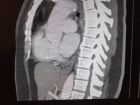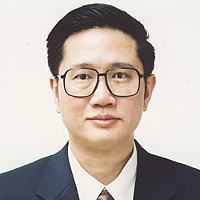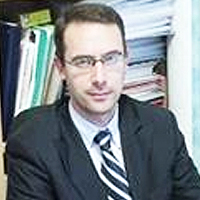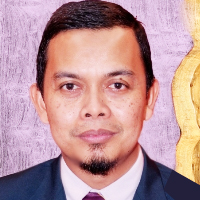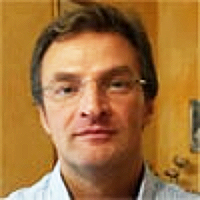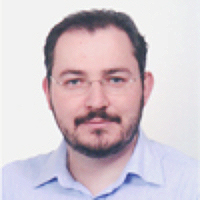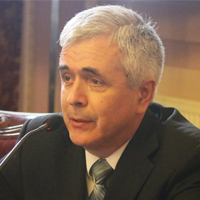Abstract
Research Article
Anthropometric characteristics and somatotype of professional soccer players by position
Cavia MM*, Moreno A, Fernández-Trabanco B, Carrillo C and Alonso-Torre SR
Published: 01 November, 2019 | Volume 4 - Issue 4 | Pages: 073-080
The anthropometric characteristics are decisive for an optimal physical level and, therefore, a good level in the game; and they can be different depending on the game position.
The aim of this study was to identify the physical characteristics, body composition and somatotype of professional soccer players and to verify differences according to their playing positions: goalkeepers, defenders, forwards and midfielders.
The measurements were performed on 57 male players of a soccer team of the Spanish Football League One. Twenty seven anthropometric variables were measured (height and body weight, four bone breadths, eleven girths and ten skinfolds) and the Bioelectrical Impedance Analysis was also performed. The percentage of body fat has been determined from 11 different equations.
Goalkeepers showed the highest weight (80.2 ± 3.2 kg), supraespinal (10.5 ± 3.8 mm) and abdominal (15.6 ± 3.5 mm) skinfolds than others positions. In relation to body fat percentages, similar results were obtained from the equations of Jackson-Pollock (from 3 and 7 skinfolds), Carter, Withers, and Heyward and Stolarczyk (mean value 7.8 ± 1.5%). Higher results were obtained from the other equations applied. Differences among positions were also found concerning body composition; goalkeepers showed the highest body fat percentage (9.4 ± 1.4%). Mean somatotype was also different among positions; goalkeepers and forwards presented a balanced mesomorph somatotype while defenders and midfielders showed an ecto-mesomorph one.
The differences in morphological characteristics according to the team position were notice only in goalkeepers, especially regarding their weight, abdominal and supraespinale skinfolds and the percentage of fat tissue.
Read Full Article HTML DOI: 10.29328/journal.jsmt.1001047 Cite this Article Read Full Article PDF
Keywords:
Anthropometry; Body fat; Skinfolds; Soccer; Somatotype
References
- Reilly T, Bangsbo J, Franks A. Anthropometric and physiological predispositions for elite soccer. J Sports Sci. 2000; 18: 669-683. PubMed: https://www.ncbi.nlm.nih.gov/pubmed/11043893
- Arroyo M, González-de-Suso JM, Sánchez C, Ansotegui L, Rocandio AM. Body Image and Body Composition: Comparisons of Young Male Elite Soccer Players and Controls. Int J Sport Nutr Exe. 2008; 18: 628-638. PubMed: https://www.ncbi.nlm.nih.gov/pubmed/19164832
- Sutton L, Scott M, Wallace J, Reilly T. Body composition of English premier League soccer players: influence of playing position, international status and ethnicity. J Sports Sci. 2009; 27: 1019-1026. PubMed: https://www.ncbi.nlm.nih.gov/pubmed/19847685
- Brocherie F, Girard O, Forchino F, Al Haddad H, Dos Santos GA, et al. Relationships between anthropometric measures and athletic performance, with special reference to repeated-sprint ability, in the Qatar national soccer team. J. Sports Sci. 2014; 32: 1243-1254. PubMed: https://www.ncbi.nlm.nih.gov/pubmed/24742185
- Matkovic BR, Misigoj-Durakovic M, Matkovic B, Jankovic S, Ruzic L, et al. Morphological differences of elite Croatian soccer players according to the team position. Coll Antropol. 2003; 7: S167-S174. PubMed: https://www.ncbi.nlm.nih.gov/pubmed/12955906
- Arnason A, Sigurdsson A, Gudmundsson I, Holme L, Engebretsen L, et al. Physical fitness, injuries and team performance in soccer. Med Sci Sports Exerc. 2004; 36: 278-285. PubMed: https://www.ncbi.nlm.nih.gov/pubmed/14767251
- Herrero A, Cabañas MD, Maestre I. Morfotipo del futbolista profesional de la Comunidad Autónoma de Madrid. Composición corporal. [Morphotype of the professional soccer player of the Madrid Autonomous Community. Body composition]. Biomecánica. 2004; 12: 72-77.
- Lukaski HC. Body composition: health and performance in exercise and sport. 1st ed. Taylor & Francis Group: London, UK. 2917; 401.
- Reilly T, Doran D. Fitness assessment. In: T. Reilly (Ed.), Science and Soccer. 2nd edition. London. 2003; 25-49.
- Meyer NL, Sundgot-Borgen J, Lohman TG, Ackland TR, Steward AD, et al. Body composition for health and performance: a survey of body composition assessment practice carried out by the Ad Hoc Research Working Group on Body Composition, Health and Performance under the auspices of the IOC Medical Commission. Br J Sports Med. 2013; 47: 1044-1053. PubMed: https://www.ncbi.nlm.nih.gov/pubmed/24065075
- Reilly T, Williams AM, Nevill A, Franks A. A multidisciplinary approach to talent identification in soccer. J Sports Sci. 2000b; 18: 695-702. PubMed : https://www.ncbi.nlm.nih.gov/pubmed/11043895
- International Society for the Advcance of Kineanthropometric. International Standards for Anthropometric Assessment. The University of South Australia Holbrooks Rd, Underdale, SA, Australia. 2001.
- Durnin JVGA, Womersley J. Body fat assessed from total body density and its estimation from skinfold thickness: measurement on 481 men and women aged from 16 and 72 years. Br J Nutr. 1974; 32: 77-95. PubMed: https://www.ncbi.nlm.nih.gov/pubmed/4843734
- Jackson A, Pollock M. Generalized equations for predicting body density of men. Br J Nutr. 1978; 40: 497-504. PubMed: https://www.ncbi.nlm.nih.gov/pubmed/718832
- Whiters RT, Craig NP, Bourdon PC, Norton KI. Relative body fat anthropometric prediction of body density of male athletes. Eur J Appl Physiol. 1987; 56: 191-200. PubMed: https://www.ncbi.nlm.nih.gov/pubmed/3569225
- Siri WE. Univ. Calif. Radiat. Lab. Publ. Nº. 3349. 1956.
- Carter JE. Body composition of Montreal Olympic athletes. In: Carter J, editor. Physical structure of Olympic athletes. Part I The Montreal Olympic Games Anthropological Project. Basel, Switzerland: Karger. 1982; 107-116.
- Cossio-Bolaños MA, Valdez F, Condori R. Estimación del porcentaje graso a través del método del área superficial en futbolistas. [Estimation of the fat percentage through the surface area method in soccer players]. Memorias VIII Congreso Panamericano de Educación Física. Caracas, Venezuela. 2001.
- Faulkner J. Physiology of swimming and diving. In: H. Falls (Ed.), Exercise Physiology. Baltimore: Academic Press. 1968; 415-445.
- Heyward VH, Stolarczyk LM. Body composition basics. In: V.H. Heyward and L.M. Stolarczyk (Eds.), Applied body composition assessment. Champaign IL: Human Kinetics Publishers. 1996; 2-20.
- Segal K, Van Loan M, Fitzgerald P, Hodgdon G, Van Itallie B. Lean body mass estimation by bioelectrical impedance analysis: a four site cross validation study. Am J Clin Nutr. 1988; 47: 7-14. PubMed: https://www.ncbi.nlm.nih.gov/pubmed/3337041
- Deurenberg P, Van Der Kooij K, Leenen R, Weststrate JA, Seidell JC. Sex and age specific prediction formulas for estimating body composition from bioelectrical impedance: a cross-validation study. Int J Obes. 1991; 15: 17-25. PubMed: https://www.ncbi.nlm.nih.gov/pubmed/2010255
- Carter JE, Heath BH. Somatotyping: Development and applications. 1ª ed. New York: Cambridge University Press. 1990.
- Casajús JA, Aragonés MT. Estudio morfológico del futbolista de alto nivel. Composición corporal y somatotipo (parte 1). [Morphological study of high level footballer. Body composition and somatotype]. Arch Med Deporte. 1991; VIII: 147-151.
- Hencken C, White C. Anthropometric assessment of Premiership soccer players in relation to playing position. Eur J Sport Sci. 2006; 6: 205-211.
- Arruda M, Cossio-Bolaños MA, Portella D. Los pliegues cutáneos como predictores del porcentaje graso en futbolistas profesionales. [Skinfolds as fat percentage predictors in professional footballers]. Biomecánica. 2009; 17: 38-45.
- Zuniga U, Osorio A. Somatotipo en jugadores de primera y primera división A pertenecientes a la liga mexicana de fútbol. [Somatotype in first and first division A players belonging to the Mexican football league}. Ciencia en la frontera: Revista de Ciencia y Tecnología de la UACJ. 2009: VII: 107-112.
- Hazir T. Physical characteristics and somatotype of soccer players according to playing level and position. J Hum Kinet. 2010; 26: 83-95.
- Henríquez-Olguín C, Báez E, Ramírez-Campillo R, Cañas R. Perfil Somatotípico del Futbolista Profesional Chileno. [Somatotypic Profile of the Chilean Professional Football Player]. Int J Morphol. 2013; 31: 225-230.
- Halvorsen Wik E, Mc Auliffe S, James Read P. Examination of physical characteristics and positional differences in professional soccer players in Qatar. Sports. 2019; 7: 9. PubMed: https://www.ncbi.nlm.nih.gov/pubmed/30602694
- Leao C, Camoes M, Clemente FM, Nikolaidis PT, Lima R, et al. Anthropometric profile of soccer players as a determinant of position specificity and methodological issues of body composition estimation. Int J Environ Res Public Health. 2019; 16: 2386. PubMed: https://www.ncbi.nlm.nih.gov/pubmed/31284403
- Herrero A. Cineantropometría: Composición Corporal y Somatotipo de futbolistas que desarrollan su actividad en la Comunidad de Madrid. [Cineanthropometry: Body Composition and Somatotype of soccer players who develop their activity in the Community of Madrid]. (Unpublished doctoral dissertation). Universidad Complutense de Madrid, Madrid. 2004.
- Cossio-Bolaños MA, Hespanhol JE, Portella D, Muniz da Silva Y, Pablos Abella C, et al. Valoración de la proporcionalidad de los pliegues cutáneos entre futbolistas profesionales titulares y reservas peruanos. [Evaluation of the proportionality of skinfolds between professional professional players and Peruvian reserves]. Biomecánica. 2013; 21: 30-37.
- Pau M, Ibba G, Leban B, Scorcu M. Characterization of static balance abilities in elite soccer players by playing position and age. Res Sports Med. 2014; 22: 355-367. PubMed: https://www.ncbi.nlm.nih.gov/pubmed/25295474
- Herrero A, Cabañas MD. Evaluación comparativa de la distribución corporal de tejido adiposo entre jugadores de fútbol profesionales, semiprofesionales y amateurs. [Comparative evaluation of the corporal distribution of adipose tissue among professional, semi-professional and amateur soccer players]. Biomecánica. 2003; 11: 23-29.
- Cossio-Bolaños MA, Arruda M, Nuñez V, Fama DR, Lancho JL. Propuesta de valores normativos para la clasificación de variables antropométricas en futbolistas profesionales. [Proposal of normative values for the classification of anthropometric variables in professional footballers]. Biomecánica. 2010; 18: 19-23.
- Do Prado WL, Botero JP, Fernandes Guerra RL, Lopes Rodrigues C and Cuvello LC, et al. Anthropometric profile and macronutrient intake in profesional Brazilian soccer players according to their field positioning. Rev Bras Med Esporte. 2006; 12: 52e-55e.
- Martin AD, Ross WD, Drinkwater DT, Clarys JP. Prediction of body fat by skinfold caliper. Assumptions and cadaver evidence. Int J Obes. 1985; 9: 31-39. PubMed: https://www.ncbi.nlm.nih.gov/pubmed/4066123
- Eston RG, Rowlands AV, Charlesworth S, Davies A, Hoppitt T. Prediction of DXA-determined whole body fat from skinfolds: importance of including skinfolds from the thigh and calf in young, healthy men and women. Eur J Clin Nutr. 2005; 59: 695-702. PubMed: https://www.ncbi.nlm.nih.gov/pubmed/15798775
- Rodríguez Gutiérrez C, Echegoyen Monroy S. Características antropométricas y fisiológicas de jugadores de fútbol de la selección mexicana. [Anthropometric and physiological characteristics in elite soccer players]. Arch Med Deporte. 2005; XXII: 33-37.
- Cossio-Bolaños M, Santi Maria T. Composición corporal de futbolistas profesionales titulares y reservas. [Body composition of professional football players and reserves]. Rev Peru Cienc Act Fís. 2014; 1: 19-25.
- Gallagher D, Heymsfield SB, Heo M, Jebb SA, Murgatroyd PR, et al. Healthy percentage body fat ranges: an approach for developing guidelines based on body mass index. Am J Clin Nutr. 2000; 72: 694-701. PubMed: https://www.ncbi.nlm.nih.gov/pubmed/10966886
- Zúñiga U, de León LG. Somatotipo en futbolistas semiprofesionales clasificados por su posición de juego. [Somatotype in semi-professional players classified by their playing position]. Int J Sports Sci. 2007; 9: 29-36.
- Almagia A, Araneda A, Sánchez J, Sánchez P, Zúñiga M, et al. Somatotipo y composición corporal de la selección de fútbol masculino universitario de Chile, Pontifica Universidad Católica de Valparaíso, Campeona los años 2012 y 2013. [Somatotype and body composition of the Chilean men's university football team, Pontifica Universidad Católica de Valparaíso, Champion for the years 2012 and 2013]. Int J Morphol. 2015; 33: 1165-1170.
- Esparza Ros F, Alvero Cruz JR. Somatotipo. [Somatotype]. In: F. Esparza Ros (Ed.), Manual de Cineantropometría Madrid: Grupo Español de Cineantropometría. 1ª edición. Monografías FEMEDE. 1993; 25-47.
- Gil SM, Gil J, Ruiz F, Irazusta A, Irazusta J. Physiological and anthropometric characteristics of Young soccer players according to their playing position: relevance for the selection process. J Strength Cond Res. 2007; 21: 438-445. PubMed: https://www.ncbi.nlm.nih.gov/pubmed/17530968
Figures:

Figure 1
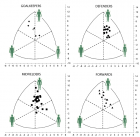
Figure 2
Similar Articles
-
Influence of elbow angle on the reliability and validity of bioelectrical impedance analysisRobert W Pettitt,Jacob B Mehrhoff,David S Mandeville,Cherie D Pettitt,Steven Ross Murray. Influence of elbow angle on the reliability and validity of bioelectrical impedance analysis. . 2017 doi: 10.29328/journal.jsmt.1001019; 2: 138-144
-
Anthropometric characteristics and somatotype of professional soccer players by positionCavia MM*,Moreno A,Fernández-Trabanco B,Carrillo C,Alonso-Torre SR. Anthropometric characteristics and somatotype of professional soccer players by position. . 2019 doi: 10.29328/journal.jsmt.1001047; 4: 073-080
Recently Viewed
-
Trends in TeledentistryRudrakshi C*. Trends in Teledentistry. J Clin Adv Dent. 2020: doi: 10.29328/journal.jcad.1001014; 4: 004-005
-
Au26-35: A Special Geometrical Structure of Au33 (D2) Cluster with Highly Occupied - 14 Pairs of Double-State DegeneracyK Vishwanathan*. Au26-35: A Special Geometrical Structure of Au33 (D2) Cluster with Highly Occupied - 14 Pairs of Double-State Degeneracy. Ann Adv Chem. 2022: doi: 10.29328/journal.aac.1001035; 6: 063-080
-
Texture of Thin Films of Aluminum Nitride Produced by Magnetron SputteringStrunin Vladimir Ivanovich,Baranova Larisa Vasilievna*,Baisova Bibigul Tulegenovna. Texture of Thin Films of Aluminum Nitride Produced by Magnetron Sputtering. Int J Phys Res Appl. 2025: doi: 10.29328/journal.ijpra.1001106; 8: 013-016
-
Minimising Carbon Footprint in Anaesthesia PracticeNisha Gandhi and Abinav Sarvesh SPS*. Minimising Carbon Footprint in Anaesthesia Practice. Int J Clin Anesth Res. 2024: doi: 10.29328/journal.ijcar.1001025; 8: 005-007
-
On Friedman equation, quadratic laws and the geometry of our universeS Kalimuthu*. On Friedman equation, quadratic laws and the geometry of our universe. Int J Phys Res Appl. 2021: doi: 10.29328/journal.ijpra.1001041; 4: 048-050
Most Viewed
-
Evaluation of Biostimulants Based on Recovered Protein Hydrolysates from Animal By-products as Plant Growth EnhancersH Pérez-Aguilar*, M Lacruz-Asaro, F Arán-Ais. Evaluation of Biostimulants Based on Recovered Protein Hydrolysates from Animal By-products as Plant Growth Enhancers. J Plant Sci Phytopathol. 2023 doi: 10.29328/journal.jpsp.1001104; 7: 042-047
-
Sinonasal Myxoma Extending into the Orbit in a 4-Year Old: A Case PresentationJulian A Purrinos*, Ramzi Younis. Sinonasal Myxoma Extending into the Orbit in a 4-Year Old: A Case Presentation. Arch Case Rep. 2024 doi: 10.29328/journal.acr.1001099; 8: 075-077
-
Feasibility study of magnetic sensing for detecting single-neuron action potentialsDenis Tonini,Kai Wu,Renata Saha,Jian-Ping Wang*. Feasibility study of magnetic sensing for detecting single-neuron action potentials. Ann Biomed Sci Eng. 2022 doi: 10.29328/journal.abse.1001018; 6: 019-029
-
Pediatric Dysgerminoma: Unveiling a Rare Ovarian TumorFaten Limaiem*, Khalil Saffar, Ahmed Halouani. Pediatric Dysgerminoma: Unveiling a Rare Ovarian Tumor. Arch Case Rep. 2024 doi: 10.29328/journal.acr.1001087; 8: 010-013
-
Physical activity can change the physiological and psychological circumstances during COVID-19 pandemic: A narrative reviewKhashayar Maroufi*. Physical activity can change the physiological and psychological circumstances during COVID-19 pandemic: A narrative review. J Sports Med Ther. 2021 doi: 10.29328/journal.jsmt.1001051; 6: 001-007

HSPI: We're glad you're here. Please click "create a new Query" if you are a new visitor to our website and need further information from us.
If you are already a member of our network and need to keep track of any developments regarding a question you have already submitted, click "take me to my Query."






